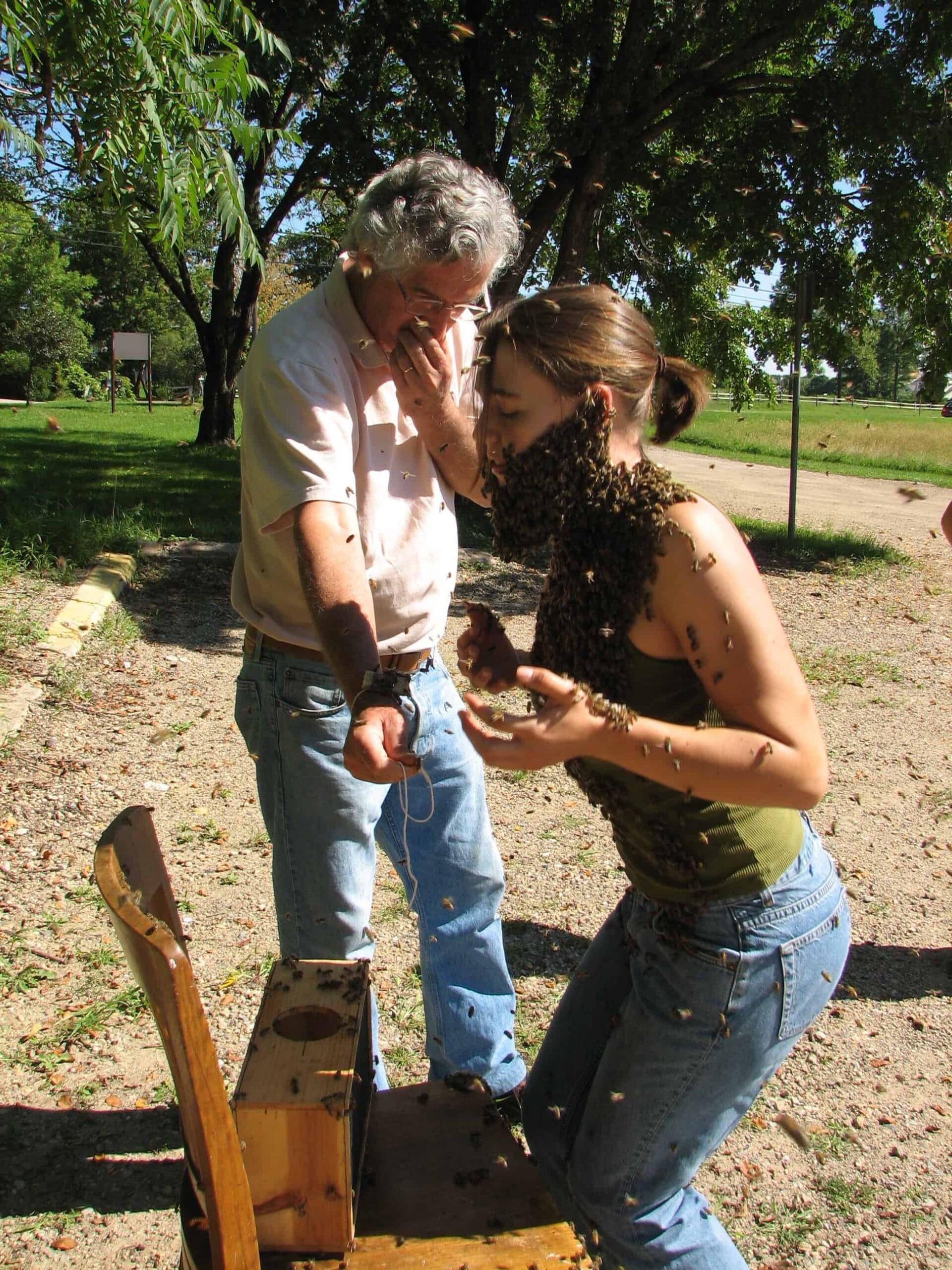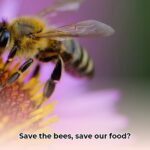Unmasking the Buzz: What is Bee Bearding?
Imagine a face completely enveloped in a buzzing, living beard of thousands of honeybees. That’s bee bearding, a practice that transforms daring individuals into living sculptures. This captivating art form, blending natural wonder with human courage, dates back to the 1830s, originating with Ukrainian beekeeper Petro Prokopovych. But what exactly is bee bearding, and why would anyone attempt it?
A History of Honeybee Hijinks
Bee bearding is far from a recent internet fad. This practice has a rich history, dating back to the 1830s when Petro Prokopovych, a Ukrainian beekeeper, brought it into the limelight. Initially a sideshow attraction, bee bearding has evolved into a peculiar art form, even earning a place in the Guinness World Records.
The heaviest bee beard recorded weighed an astonishing 140 pounds – imagine carrying a small adult on your face, but with an added hum! The record for the longest duration belongs to an individual who endured this buzzing burden for a mind-boggling 61 minutes.
Why Do People Do It?
The motivations behind bee bearding are as diverse as the beekeepers themselves. Historically, it served as a public demonstration of beekeeping skills and knowledge. Today, it continues to raise awareness about the vital role of bees and beekeeping in our ecosystem. For some, it’s an adrenaline-pumping challenge, a test of courage against the fear of stings. For others, it’s a profound way to connect with nature, experiencing the mesmerizing hum of a bee colony up close. [https://www.lolaapp.com/border-collie-man]
Do Bee Beards Sting? Unveiling the Itchy Truth
While experienced bee handlers possess techniques to maintain calmness within the bee colony, the risk of stings remains an inherent part of bee bearding. Consider this: the larger the bee population, the higher the probability of at least one bee feeling defensive enough to sting.
Several factors can trigger a bee’s defensive response, including weather conditions, the queen bee’s proximity, and even the handler’s behavior. Hot, stormy weather tends to make bees more agitated, much like humans on a bad day. [https://www.lolaapp.com/black-swallower]
The queen bee’s pheromones are crucial for maintaining colony harmony. Her presence nearby usually keeps the worker bees relatively relaxed. However, if they sense her absence or a disturbance in her pheromones, anxiety levels rise, increasing the likelihood of stings. [https://www.lolaapp.com/bird-spider]
Experienced bee handlers who remain calm, move slowly, and understand bee behavior minimize the chances of getting stung. Conversely, sudden movements or loud noises can startle the bees, making stings more likely.
The Ethics of Bee Bearding: A Stinging Debate
The captivating spectacle of a bee beard raises significant ethical considerations. The practice often involves using a caged queen bee to attract the worker bees and create the beard. Critics argue that this manipulation disrupts the bees’ natural behavior and places undue stress on the queen, all for the sake of human entertainment. [https://www.lolaapp.com/beautiful-butterflies]
This debate has sparked discussions about the ethics of bee bearding, even when conducted with the utmost care and respect. Some argue that alternative, less intrusive ways to appreciate and learn about bees exist, such as visiting local bee farms, attending workshops, planting bee-friendly gardens, or supporting local beekeepers. [https://www.lolaapp.com/big-beak-bird]
What to Do (and What NOT to Do) When You See Bee Bearding
Witnessing a massive clump of bees, resembling a fuzzy beard, on the outside of your beehive can be alarming for any beekeeper. This phenomenon, known as bee bearding, is, however, often a natural response to internal hive conditions and not necessarily a cause for panic. [https://www.lolaapp.com/black-giraffe]
Why Are My Bees Bearding?
Bee bearding can be attributed to several factors, often indicating a need for adjustments within the hive: [https://www.lolaapp.com/blue-sea-dragon]
- Overcrowding: As a bee colony grows, space inside the hive becomes limited, leading to congestion and increased temperature. Bearding allows some bees to move outside, relieving the overcrowding and heat.
- High Temperatures: Bees, like any living organism, are sensitive to temperature fluctuations. Bearding is a natural cooling mechanism. When the internal hive temperature rises, bees cluster outside to improve ventilation and reduce heat buildup.
- Poor Ventilation: Inadequate ventilation can exacerbate heat issues within the hive. If the hive lacks sufficient airflow, bees resort to bearding to create their own ventilation system.
- Nectar Dearth: Ironically, a scarcity of nectar can also lead to bearding. With fewer foraging opportunities, bees become less active, leading to congestion inside the hive.
- Stressors: Various stressors, such as mite infestations, diseases, or even recent treatments, can trigger bearding behavior in bees.
Responding to Bee Bearding:
- Don’t Panic: Bee bearding is usually a natural, temporary response and not an immediate emergency.
- Observation is Key: Carefully observe the bees’ behavior and the surrounding conditions to determine the likely cause of the bearding.
- Provide Ventilation: Ensure adequate ventilation by adding screened bottom boards, propping open the hive top slightly, or providing shade during the hottest parts of the day.
- Manage Space: If overcrowding is evident, consider adding honey supers or brood boxes to provide the bees with more room.
- Address Stressors: If you suspect mites, diseases, or other stressors, consult a local beekeeping expert or association for guidance on appropriate treatments.
- Supplemental Feeding: In cases of nectar dearth, provide supplemental sugar syrup or pollen patties to support the colony’s nutritional needs.
Bee Bearding: A Window into the Hive Mind
Bee bearding, while visually impressive and sometimes controversial, offers a glimpse into the fascinating world of bee behavior. It underscores the importance of understanding these essential pollinators, their complex communication systems, and the factors that influence their behavior. [https://www.lolaapp.com/blue-tarantula]
Whether you view bee bearding as an art form, an educational opportunity, or a risky practice, one thing is certain: it sparks curiosity and ignites a sense of wonder about the intricate lives of bees. As we continue to unravel the mysteries of the hive mind, let’s prioritize the well-being of these crucial creatures and support sustainable beekeeping practices for generations to come.
- Unveiling Bernhard Caesar Einstein’s Scientific Achievements: A Legacy in Engineering - July 15, 2025
- Uncover who is Jerry McSorley: CEO, Family Man, Business Success Story - July 15, 2025
- Discover Bernhard Caesar Einstein’s Scientific Contributions: Unveiling a Legacy Beyond Einstein - July 15, 2025
















4 thoughts on “Bee Bearding: What It Is, Why It’s Done, and the Buzz About Its Ethics”
Comments are closed.